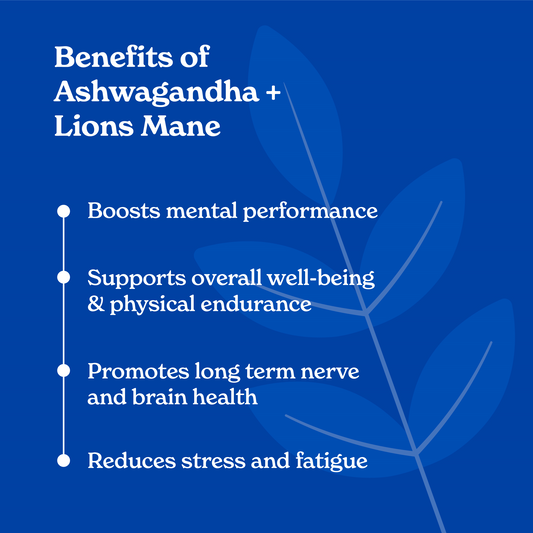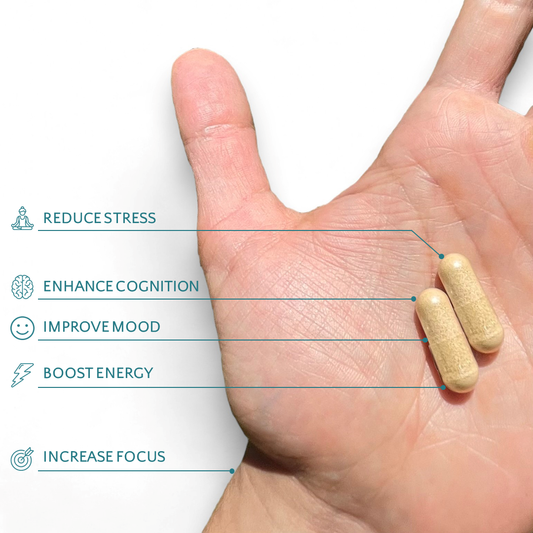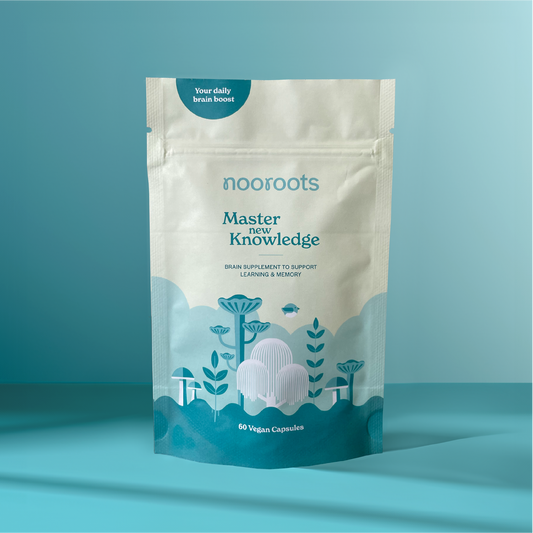In an era defined by rapid information exchange and increasing longevity, the pursuit of sharper cognition and sustained mental performance has become more relevant than ever. As individuals strive to stay mentally agile in both professional and personal spheres, interest in cognitive enhancement has surged.
Nootropics—often referred to as “smart drugs” or “cognitive enhancers”—represent one of the most discussed approaches to this goal. This diverse category includes naturally occurring compounds, dietary supplements, synthetic molecules, and certain prescription medications, all explored for their potential to support functions such as memory, focus, creativity, and motivation.
The modern fascination with nootropics reflects a broader shift in how society views brain health: not merely as the absence of decline, but as a capacity that can be optimized and maintained throughout life. Whether derived from centuries-old traditional remedies or cutting-edge neuroscience, these compounds invite both curiosity and scrutiny.
This blog will examine the origins, classifications, and scientific foundations of nootropics, as well as explore complementary natural and lifestyle-based strategies for enhancing cognitive performance.
Contents
- What is a Nootropic?
- The Neurobiology of Learning
- The Neurobiology of Memory Formation
- Conventional Approaches to Treating Memory and Cognition
- The Best Natural Nootropics for Learning and Memory
- Using Natural Nootropics for Enhancing Cognition
- Importance of Healthy Lifestyle for Learning and Memory
Boost Cognitive Performance with the Best Natural Nootropics for Learning and Memory

What is a Nootropic?
A nootropic is a substance intended to enhance cognitive function—particularly areas such as memory, attention, motivation, or creativity—without causing significant adverse effects or dependency. The concept encompasses a broad range of compounds, from naturally occurring plant extracts and dietary supplements to synthetic molecules and certain prescription drugs.
The term nootropic was introduced in 1972 by Dr. Corneliu E. Giurgea, a Romanian psychologist and chemist. Derived from the Greek nous (“mind”) and tropein (“to bend or turn”), it described agents capable of “bending the mind” toward improved performance. Giurgea proposed that, to qualify as a true nootropic, a substance should:
- Enhance learning and memory.
- Protect the brain against physical or chemical injury.
- Improve the efficiency of brain mechanisms.
- Lack the pharmacology typical of other psychotropic drugs.
- Be essentially non-toxic and safe for long-term use.
In essence, nootropics are substances that aim to support or optimize brain performance, rather than alter mood or perception in the way stimulants or psychoactive drugs might.
The Neurobiology of Learning
Understanding the neurobiology of learning reveals how the brain transforms experience into lasting change. This knowledge not only deepens our comprehension of human cognition but also informs strategies for education, cognitive enhancement, and the treatment of learning disorders.
At its foundation, learning depends on neuroplasticity—the brain’s ability to reorganize itself by forming and modifying neural connections in response to new information, experiences, or environmental changes. Neuroplasticity allows neurons to adapt their activity patterns, strengthening some pathways while pruning others, thus forming the biological basis of learning and memory.
Synaptic Plasticity
One of the most studied forms of neuroplasticity is synaptic plasticity—the capacity of synapses (the junctions between neurons) to strengthen or weaken over time depending on activity levels.
Two major processes illustrate this mechanism:
- Long-Term Potentiation (LTP): A persistent increase in synaptic strength resulting from repeated and simultaneous activation of connected neurons. LTP, most prominently observed in the hippocampus, is widely recognized as a core cellular mechanism underlying learning and memory formation.
- Long-Term Depression (LTD): A long-lasting reduction in synaptic strength, essential for refining neural circuits and discarding less useful connections. LTD complements LTP by maintaining balance and adaptability within learning networks.
Together, LTP and LTD ensure that learning is not just about strengthening connections but also about selectively weakening them to optimize cognitive efficiency.
Neurotransmitters and Learning
Neurotransmitters—the brain’s chemical messengers—play a central role in regulating synaptic plasticity and, by extension, learning. Each contributes uniquely to how the brain encodes, stabilizes, and recalls information:
- Glutamate: The primary excitatory neurotransmitter, crucial for initiating LTP and promoting synaptic strengthening.
- GABA (γ-aminobutyric acid): The main inhibitory neurotransmitter, counterbalancing excitation to prevent overstimulation and maintain neural stability.
- Acetylcholine: Enhances attention, focus, and the encoding of new memories, making it vital for learning new information. D
- opamine: Modulates motivation and reward-based learning, reinforcing behaviors associated with positive outcomes.
This interplay of excitatory and inhibitory signaling creates the dynamic balance required for effective learning and memory formation—an intricate process that remains a central focus of modern neuroscience.
The Neurobiology of Memory Formation
Memory formation is a complex neurobiological process that enables the brain to encode, store, and retrieve information. It allows humans to learn from experience, plan ahead, and sustain a continuous sense of identity.
The Stages of Memory Formation
Memory formation unfolds in three key stages—encoding, consolidation, and retrieval—each supported by distinct neural and molecular mechanisms.
- Encoding: Encoding is the conversion of sensory input into a neural representation the brain can process and store. Effective encoding depends heavily on attention—the more attentively information is processed, the stronger the memory trace. The hippocampus plays a key role in integrating sensory input and initiating memory formation, while the prefrontal cortex directs attention and organizes information into meaningful patterns that aid recall.
- Consolidation: Consolidation stabilizes encoded information, transforming it into long-term memory through synaptic strengthening and network reorganization. Initially dependent on the hippocampus, memories are gradually transferred to the neocortex for permanent storage. This process relies on synaptic plasticity and neurochemical signaling involving glutamate, NMDA receptors, and calcium-dependent pathways, which strengthen neural circuits and stabilize memory traces.
- Retrieval: Retrieval brings stored information back into conscious awareness. It relies on contextual cues—similarities between encoding and recall environments can facilitate access to stored memories. The prefrontal cortex coordinates retrieval strategies, while the hippocampus helps reconstruct detailed representations of past events. Retrieval success depends on the strength of the memory trace and the presence of effective cues.
Types of Memory
Memory is broadly categorized into declarative and non-declarative forms, each relying on distinct brain systems:
- Declarative Memory: Involves consciously accessible facts and events. It includes episodic memory (personal experiences) and semantic memory (general knowledge). The hippocampus functions as an indexing hub, linking the distributed elements of each memory across the cortex.
- Non-Declarative Memory: Also known as implicit memory, it governs skills and learned behaviors that operate automatically, such as motor tasks. The cerebellum and basal ganglia are key to procedural memory, enabling skill acquisition and habit formation.
Synaptic Plasticity and Molecular Mechanisms
As discussed earlier, synaptic plasticity—the brain’s capacity to modify the strength of synaptic connections—forms the biological foundation of both learning and memory. The same mechanisms that enable skill acquisition and adaptive behavior, namely long-term potentiation (LTP) and long-term depression (LTD), also underlie the encoding and stabilization of memories.
At the molecular level, memory formation begins when neurotransmitters released from the presynaptic neuron activate receptors on the postsynaptic membrane. Among these, glutamate acting on NMDA receptors is critical for initiating LTP. NMDA receptor activation triggers a cascade of intracellular signaling events that increase calcium levels, activate protein kinases, and ultimately lead to the insertion of AMPA receptors into the postsynaptic membrane—strengthening synaptic transmission.
For memories to persist beyond the short term, this transient synaptic strengthening must be consolidated through gene expression and protein synthesis. The transcription factor CREB (cAMP response element-binding protein) plays a central role in this process, regulating genes that drive structural remodeling and long-lasting changes in synaptic connectivity.
In this way, the molecular machinery of LTP and LTD transforms fleeting patterns of neural activity into enduring memory traces—linking the neurobiology of learning directly to the persistence of memory.
The Systems Involved in Memory
Memory formation engages a distributed network of specialized brain regions, each contributing to distinct aspects of encoding, storage, and retrieval:
- Hippocampus: Central to the formation and organization of new declarative memories; acts as a temporary index linking distributed cortical representations.
- Entorhinal Cortex: Serves as the main interface between hippocampus and neocortex, essential for memory consolidation and spatial navigation.
- Prefrontal Cortex: Supports working memory, attention, decision-making, and the strategic organization of information for both encoding and retrieval.
- Amygdala: Modulates memory strength based on emotional significance, enhancing consolidation of emotionally charged events.
- Cerebellum: Coordinates procedural memory and motor learning, contributing to the timing and precision of learned movements.
- Basal Ganglia: Involved in procedural and habit learning, as well as reinforcement through reward-based mechanisms.
- Thalamus: Acts as a sensory relay and integrative hub, linking cortical regions involved in episodic and declarative memory.
- Neocortex: The ultimate site of long-term memory storage, where memories become stable and independent of the hippocampus over time.

Conventional Approaches to Treating Memory and Cognition
A range of approved medications address cognitive decline—especially in Alzheimer’s disease—either by modifying disease progression or managing symptoms affecting memory, thinking, behaviour, and sleep.
Progression-Modifying Medications:
Drugs in this class act on disease biology (most target amyloid-β plaques) and are indicated for early Alzheimer’s (mild cognitive impairment or mild dementia), with MRI monitoring for amyloid-related imaging abnormalities (ARIA).
Examples include:
- Lecanemab (Leqembi®): Intravenous antibody that reduces amyloid plaques and modestly slows clinical decline in early Alzheimer’s; received traditional FDA approval (July 2023). Dosing is every 2 weeks initially; label includes ARIA warnings.
- Donanemab (Kisunla™): Intravenous antibody approved July 2024 for early symptomatic Alzheimer’s; notable for finite treatment—dosing every 4 weeks with the option to stop once amyloid is cleared, with ARIA monitoring requirements.
- Aducanumab (Aduhelm®): Development and commercialization were discontinued in 2024; not in routine clinical use going forward.
Common risks: infusion reactions and ARIA (cerebral edema/hemorrhage); patient selection, imaging surveillance, and risk–benefit counseling are essential.
Symptom Management Medications
These do not alter disease course but help cognition and daily function.
- Cholinesterase inhibitors — donepezil, rivastigmine, galantamine: increase synaptic acetylcholine to support memory and attention; adverse effects include GI upset, weight loss, and bradyarrhythmia risk in susceptible patients.
- Glutamatergic modulator — memantine: an NMDA receptor antagonist used in moderate–severe disease and in combination therapy.
- Fixed-dose combination — memantine + donepezil: provides additive symptomatic benefit in some patients with moderate–severe Alzheimer’s. (Label-based use; see memantine and cholinesterase inhibitor refs.)
Non-Cognitive Symptom Management
Behavioural and sleep symptoms frequently require targeted therapy.
- Agitation in Alzheimer’s disease — brexpiprazole (Rexulti®): first FDA-approved treatment for agitation associated with dementia due to Alzheimer’s (May 2023). Effect sizes are modest; monitor for class-related adverse effects.
-
Insomnia — dual orexin receptor antagonists (DORAs) reduce wake drive by blocking OX1R/OX2R:
- suvorexant (Belsomra®) — FDA-approved for sleep-onset/maintenance insomnia.
- daridorexant (Quviviq®) — FDA-approved (2022); similar mechanism with dose-flexible use.

The Best Natural Nootropics for Learning and Memory
A growing body of research supports the use of certain natural compounds—derived from plants, fungi, and nutrients—for enhancing cognitive performance and protecting brain health. Below are some of the most well-studied natural nootropics, each with unique mechanisms and evidence-based benefits.
Ginkgo Biloba
-
Origin: Among the world’s oldest tree species, Ginkgo biloba has been used in traditional Chinese medicine for millennia to support memory and circulation.
- Mechanism: Enhances cerebral blood flow, improving oxygen and nutrient delivery, and provides antioxidant protection against oxidative stress.
- Benefits: Evidence suggests Ginkgo can improve cognitive function, particularly in age-related decline, supporting memory, focus, and processing speed.
Bacopa Monnieri
- Origin: Known as Brahmi in Ayurveda, Bacopa monnieri has been used for centuries to enhance intellect and longevity.
- Mechanism: Contains bacosides that support synaptic repair, enhance communication between neurons, and promote neural resilience.
- Benefits: Clinical studies indicate improvements in memory acquisition and recall, reduced anxiety, and enhanced learning speed, especially with consistent long-term use.
Rhodiola Rosea
- Origins: Often called “golden root,” Rhodiola rosea is an adaptogenic herb traditionally used in Europe and Asia to combat fatigue and enhance endurance.
- Mechanism: Modulates stress-related neurotransmitters and reduces cortisol levels, thereby preserving cognitive performance under stress.
- Benefits: Improves attention, working memory, and mood during periods of mental or physical strain, while reducing fatigue.
Lion’s Mane (Hericium erinaceus)
- Origins: A medicinal mushroom revered in East Asian traditions for supporting cognitive and neurological health.
- Mechanism: Stimulates nerve growth factor (NGF) synthesis and promotes neurogenesis, enhancing neural connectivity and plasticity.
- Benefits: Studies suggest improvements in memory, concentration, and mood, along with potential neuroprotective effects against age-related decline.
CDP-Choline
- Origin: A naturally occurring compound found in cell membranes and available as a supplement.
-
Mechanism: Increases acetylcholine availability and supports phospholipid synthesis in neuronal membranes, improving communication between brain cells.
- Benefits: Enhances focus, mental energy, and memory performance, particularly in individuals with cognitive impairment or high mental demand.
Turmeric
- Origin: The yellow spice derived from Curcuma longa, long used in Indian and Southeast Asian medicine.
- Mechanism: Curcumin, its active compound, has potent anti-inflammatory and antioxidant effects and raises brain-derived neurotrophic factor (BDNF) levels.
- Benefits: Associated with improved memory and attention in healthy adults and potential protection against neurodegenerative changes.
Blueberry
- Origin: Consumed for centuries as both food and medicine, blueberries are rich in brain-protective polyphenols.
- Mechanism: Contain flavonoids that cross the blood–brain barrier and localize in regions linked to learning and memory, where they enhance neuronal signaling and reduce oxidative stress.
- Benefits: Regular intake is linked to improved memory, processing speed, and neuroprotection in aging populations.
B-Vitamins (B6, B9, B12)
- Origin: Essential nutrients widely found in food, crucial for nervous system and energy metabolism.
- Mechanism: Regulate homocysteine levels and support neurotransmitter synthesis and myelin maintenance.
- Benefits: Adequate levels help sustain cognitive clarity, reduce fatigue, and lower the risk of age-related cognitive decline.
L-Tyrosine
- Origin: A naturally occurring amino acid abundant in protein-rich foods and available as a supplement.
- Mechanism: Serves as a precursor for dopamine, norepinephrine, and epinephrine, supporting neurotransmission under stress.
- Benefits: Enhances working memory, mental flexibility, and resilience under conditions of cognitive load, sleep deprivation, or acute stress.
These natural nootropics collectively support the biological foundations of learning and memory—by promoting neuroplasticity, improving circulation, modulating neurotransmitters, and protecting against oxidative and inflammatory damage. Their efficacy varies by individual and dose, but consistent evidence supports their role in maintaining cognitive vitality.

Using Natural Nootropics for Enhancing Cognition
Natural nootropics can safely enhance cognitive function when used with structure and awareness. Follow these concise steps to build an effective, personalized approach.
- Clarify Your Cognitive Goals: Define what you want to improve—memory, focus, creativity, mood, or stress resilience—to guide your nootropic choices and avoid random experimentation.
- Research and Select Quality Compounds: Review credible studies, focus on well-characterized natural options (e.g., Bacopa for learning, Citicoline for focus, Rhodiola for stress), and choose third-party tested, standardized extracts from reputable brands.
- Consult a Healthcare Professional: Before starting, seek medical advice—especially if you take medications or have underlying conditions—to ensure safety and proper dosing.
- Start Simple and Low: Begin with a single compound at a low dose to monitor effects and tolerance, increasing gradually only if well tolerated and beneficial.
- Build Synergy Thoughtfully: Once individual effects are clear, combine complementary nootropics that act through different mechanisms (e.g., Bacopa + Citicoline), avoiding overlap or excessive stimulation.
- Support with Core Lifestyle Habits: Amplify nootropic benefits with consistent sleep, regular exercise, stress regulation, and a diet rich in omega-3s, antioxidants, and B-vitamins—each critical for brain health.
- Track, Reflect, and Adjust: Keep a brief journal of focus, memory, and mood changes. Use trends to fine-tune dosage, timing, or combinations—and discontinue what doesn’t work.
- Cycle and Sustain Responsibly Prevent: tolerance by cycling (e.g., 4–6 weeks on, 1 week off) or rotating nootropics; balance consistency with periodic resets to maintain long-term effectiveness.
- Keep Learning and Adapting: Stay informed on new research and adjust your approach as your goals, health, and understanding evolve. Cognitive enhancement is an iterative, ongoing process.
Effective nootropic use is built on clarity, safety, and consistency—begin simple, support with lifestyle, and evolve based on results. Over time, this measured approach can foster sharper cognition and enduring mental vitality.
Importance of Healthy Lifestyle for Learning and Memory
A healthy lifestyle—anchored by regular physical activity, balanced nutrition, restorative sleep, and psychological well-being—plays a crucial role in supporting learning and memory. Among these factors, exercise stands out as one of the most powerful natural enhancers of cognitive function, exerting profound effects on neuroplasticity, brain metabolism, and neurotrophic signaling, particularly through Brain-Derived Neurotrophic Factor (BDNF).
Exercise and Cognitive Performance
A substantial body of evidence demonstrates that consistent physical activity improves core cognitive domains, including attention, memory, and executive function. Regular exercise has been associated with:
- Improved performance on standardized cognitive assessments
- Reduced risk of dementia and age-related cognitive decline
- Preservation of cerebral perfusion and gray matter volume in aging populations
Neuroimaging studies confirm that physically active individuals exhibit increased brain volume and connectivity in regions such as the hippocampus and prefrontal cortex, both critical for learning and memory.
Temporal Benefits of Exercise on Cognition
Notably, the cognitive benefits of exercise extend beyond the training period itself. Research shows that improvements in spatial memory and learning can persist for weeks after exercise cessation.
For instance, animal studies have demonstrated that mice engaging in short-term voluntary exercise exhibited enhanced performance on spatial memory tasks even 1–2 weeks after stopping exercise, suggesting enduring neural adaptations rather than transient performance boosts.
This persistence implies that exercise initiates molecular and structural changes—such as enhanced synaptic strength and neurogenesis—that continue to support cognition long after physical activity has ended.
The Role of BDNF in Learning and Memory
Brain-Derived Neurotrophic Factor (BDNF) is central to the link between exercise and cognition. As a key regulator of neuroplasticity, BDNF facilitates synaptic strengthening, dendritic growth, and neurogenesis—processes fundamental to memory formation and cognitive flexibility.
Exercise significantly increases BDNF expression, particularly in the hippocampus, the brain region most vital for learning and memory. Elevated BDNF levels support:
- Enhanced synaptic plasticity and signal transmission
- Greater neuronal survival and resilience to stress
- Improved memory consolidation and learning efficiency
Sustained BDNF Elevation and Lasting Effects
Importantly, BDNF elevation following exercise is not short-lived. Studies show that raised hippocampal BDNF levels can persist for several weeks, aligning with prolonged cognitive benefits observed post-exercise.
This sustained response is driven by improved cerebral blood flow, oxygenation, and metabolic efficiency, all of which create a favorable environment for ongoing neural repair and adaptation.
Moreover, BDNF mediates stress resilience and contributes to neuroprotection, counteracting the effects of inflammation and oxidative stress—key factors in cognitive aging and neurodegenerative disease.

Conclusion
Nootropics represent a compelling field of exploration for those seeking to enhance cognitive performance, focus, and memory. Since their conceptual introduction by Corneliu E. Giurgea in the 1970s, these substances have evolved from experimental compounds into a diverse class that includes pharmaceutical agents, nutraceuticals, and natural extracts—each targeting different aspects of brain function.
Yet, the pursuit of sharper cognition extends beyond supplementation. The growing body of research underscores that sustainable cognitive enhancement arises from an integrated approach—one that combines evidence-based nootropics with a healthy lifestyle encompassing physical activity, balanced nutrition, adequate sleep, and ongoing mental engagement.
Ultimately, the science of nootropics is as much about optimizing brain health as it is about enhancing performance. Achieving lasting cognitive vitality requires not only informed use of nootropic compounds but also a commitment to habits that nurture the brain’s natural capacity to adapt, grow, and thrive across the lifespan.
For those interested in taking the first step, our Learning & Memory Nootropic Supplement at Nooroots offers a carefully formulated introduction to the world of cognitive enhancement—crafted to support both clarity of mind and balance of mood.
Continue exploring the science of smarter nutrition with these related reads:
References
- Basso, J. C., & Suzuki, W. A. (2017). The effects of acute exercise on mood, cognition, neurophysiology, and neurochemical pathways: a review. Brain Plasticity, 2(2), 127–152.
- Berchtold, N. C., Castello, N. A., & Cotman, C. W. (2010). Exercise and time-dependent benefits to learning and memory. Neuroscience, 167(3), 588–597. https://doi.org/10.1016/j.neuroscience.2010.02.050
- Bisaz, R., Travaglia, A., & Alberini, C. M. (2014). The neurobiological bases of memory formation: from physiological conditions to psychopathology. Psychopathology, 47(6), 347–356. https://doi.org/10.1159/000363702
- Cheatham, C. L., Canipe, L. G., Millsap, G., Stegall, J. M., Chai, S. C., Sheppard, K., & Lila, M. A. (2022). Six-month intervention with wild blueberries improved speed of processing in mild cognitive decline: a double-blind, placebo-controlled, randomized clinical trial. Nutritional Neuroscience, 26(10), 1019–1033. https://doi.org/10.1080/1028415x.2022.2117475
- Cotman, C. W., Berchtold, N. C., & Christie, L.-A. (2007). Exercise builds brain health: key roles of growth factor cascades and inflammation. Trends in Neurosciences, 30(9), 464–472.
- Erickson, K. I., et al. (2011). Exercise training increases size of hippocampus and improves memory. Proceedings of the National Academy of Sciences, 108(7), 3017–3022.
- Fioravanti, M., & Yanagi, M. (2004). Cytidinediphosphocholine (CDP choline) for cognitive and behavioural disturbances associated with chronic cerebral disorders in the elderly. Cochrane Database of Systematic Reviews. https://doi.org/10.1002/14651858.cd000269.pub2
- Gallistel, C. R., & Matzel, L. D. (2013). The Neuroscience of Learning: Beyond the Hebbian Synapse. Annual Review of Psychology, 64(1), 169–200. https://doi.org/10.1146/annurev-psych-113011-143807
- Gertz, M., Zheng, Q., Xu, M., Zhou, X., Lü, L., Li, Z., & Zheng, G. (2018). Rhodiola rosea L. Improves Learning and Memory Function: Preclinical Evidence and Possible Mechanisms. Frontiers in Pharmacology, 9. https://doi.org/10.3389/fphar.2018.01415
- Jongkees, B. J., Hommel, B., & Kühn, S. (2015). Effect of tyrosine supplementation on clinical and healthy populations under stress or cognitive demands—A review. Journal of Psychiatric Research, 70, 50–57. https://doi.org/10.1016/j.jpsychires.2015.08.014
- Kennedy, M. B. (2013). Synaptic signaling in learning and memory. Cold Spring Harbor Perspectives in Biology, 8(2), a016824. https://doi.org/10.1101/cshperspect.a016824
- Kongkeaw, C., Dilokthornsakul, P., Thanarangsarit, P., Limpeanchob, N., & Scholfield, C. N. (2014). Meta-analysis of randomized controlled trials on cognitive effects of Bacopa monnieri extract. Journal of Ethnopharmacology, 151(1), 528–535. https://doi.org/10.1016/j.jep.2013.11.008
- Medications for Memory, Cognition and Dementia-Related Behaviors. (n.d.). Alzheimer’s Disease and Dementia. https://www.alz.org/alzheimers-dementia/treatments/medications-for-memory
- Miranda, M. I. (2007). Changes in Neurotransmitter Extracellular Levels during Memory Formation. Neural Plasticity and Memory - NCBI Bookshelf. https://www.ncbi.nlm.nih.gov/books/NBK3921/
- Mori, K., Inatomi, S., Ouchi, K., Azumi, Y., & Tuchida, T. (2008). Improving effects of the mushroom Yamabushitake (Hericium erinaceus) on mild cognitive impairment: a double‐blind placebo‐controlled clinical trial. Phytotherapy Research, 23(3), 367–372. https://doi.org/10.1002/ptr.2634
- Nadel, L., Hupbach, A., Gómez, R. L., & Newman-Smith, K. C. (2012). Memory formation, consolidation and transformation. Neuroscience & Biobehavioral Reviews, 36(7), 1640–1645. https://doi.org/10.1016/j.neubiorev.2012.03.001
- Tan, M., Yu, J., Tan, C., Wang, H., Meng, X., Wang, C., Jiang, T., Zhu, X., & Tan, L. (2014). Efficacy and Adverse Effects of Ginkgo biloba for Cognitive Impairment and Dementia: A Systematic Review and Meta-Analysis. Journal of Alzheimer’s Disease, 43(2), 589–603. https://doi.org/10.3233/jad-140837
- Travica, N., D’Cunha, N. M., Naumovski, N., Kent, K., Mellor, D., Firth, J., Georgousopoulou, E., Dean, O., Loughman, A., Jacka, F. N., & Marx, W. (2020). The effect of blueberry interventions on cognitive performance and mood: A systematic review of randomized controlled trials. Brain, Behavior, and Immunity, 85, 96–105. https://doi.org/10.1016/j.bbi.2019.04.001
- van Praag, H., Shubert, T., Zhao, C., & Gage, F. H. (2005). Exercise enhances learning and hippocampal neurogenesis in aged mice. Journal of Neuroscience, 25(38), 8680–8685.
- Vaynman, S., & Gomez-Pinilla, F. (2005). License to run: exercise impacts functional plasticity in the intact and injured central nervous system by using neurotrophins. Neurorehabilitation and Neural Repair, 19(4), 283–295.
- Zhu, L., Mei, X., Zeng-Guo, Z., Xie, Y., & Lang, F. (2018). Curcumin intervention for cognitive function in different types of people: A systematic review and meta‐analysis. Phytotherapy Research, 33(3), 524–533. https://doi.org/10.1002/ptr.6257







